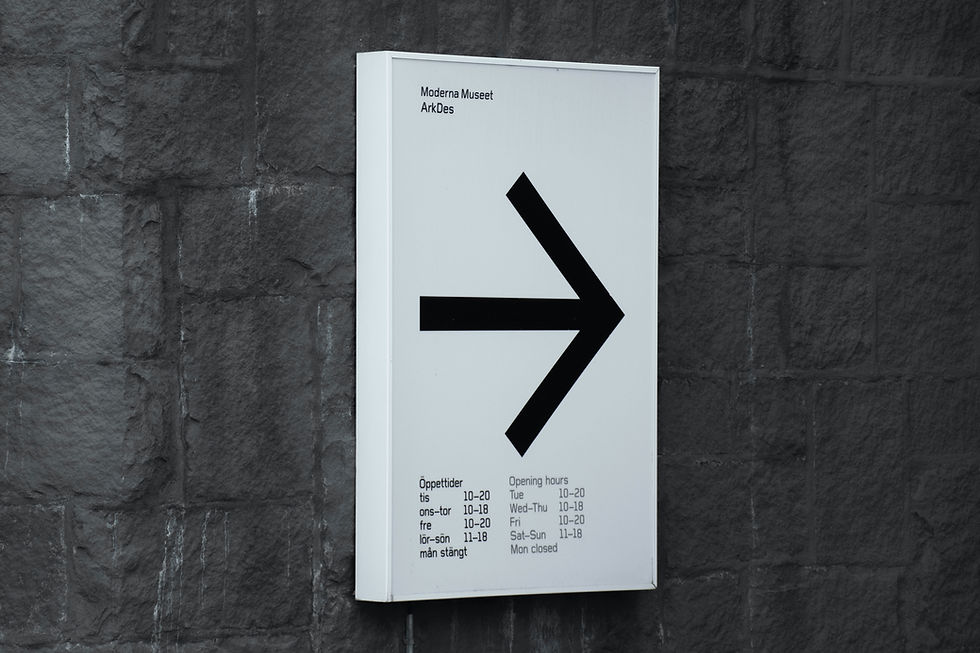Choosing the Right Materials for 3D Signage: A Guide for Business Owners.
- Advert & Signs Team
- Sep 26, 2023
- 3 min read
Updated: Nov 4

Choosing the Right Materials for 3d signage: A Guide for Business Owners
In today’s competitive business landscape, marketing and advertising have become crucial for the success of any company. As a business owner, you may be constantly on the lookout for innovative ways to attract customers and make your brand stand out. One strategy that has gained significant popularity in recent years is the use of 3D signage. These eye-catching signs have the power to leave a lasting impression on potential customers and create a unique brand identity. However, to ensure the longevity and effectiveness of these signs, it is essential to choose the right materials.
When it comes to creating 3D signage, there are various materials available in the market, each with its own set of advantages and limitations. This guide aims to provide business owners with valuable insights into the key factors to consider while selecting materials for their 3D signs, ensuring that they make an informed decision that aligns with their branding goals and budget.
One of the most popular materials for 3D signage is acrylic. Acrylic offers a high level of versatility, allowing businesses to achieve the desired shape, color, transparency, and texture for their signs. Its durability and resistance to weathering make it an ideal choice for both indoor and outdoor signage. Additionally, acrylic is lightweight and relatively cost-effective compared to other materials, making it a preferred option for small businesses with a limited budget.
Another commonly used material for 3D signage is PVC. PVC, or polyvinyl chloride, possesses excellent strength and durability, making it suitable for long-term outdoor applications. It is also a cost-effective alternative to acrylic, making it an attractive option for businesses focusing on affordability. However, it is important to note that PVC signage may not offer the same level of weather resistance as acrylic, and therefore, it may require additional protective coatings to ensure longevity.
For those seeking a more metallic look, aluminum composite panels (ACP) can be an excellent choice. ACP signage combines a layer of aluminum with a plastic core, providing a lightweight yet robust solution. This material offers excellent rigidity and can withstand harsh weather conditions while maintaining its aesthetic appeal. Although ACP signage may be relatively costlier, the long-lasting results make it a wise investment for businesses that prioritize durability and premium finishes.
In recent years, the 3D printing industry has made significant advancements, opening up new possibilities for creating custom signage. 3D-printed signs can be constructed using materials such as PLA (polylactic acid) or ABS (acrylonitrile butadiene styrene), which are both thermoplastics widely used in the industry. 3D-printed signage allows for intricate designs and unique shapes that were previously impossible to achieve. However, it is crucial to consider the intended environment and the expected lifespan of the signage when opting for this material, as 3D-printed signs may not possess the same level of durability as other options.
When selecting materials for 3D signage, it is vital to consider factors such as weather resistance, cost, durability, and aesthetics. Each material has its own set of advantages and limitations, and finding the optimal choice requires a careful evaluation of the specific requirements of your business. Whether you opt for acrylic, PVC, ACP, or explore the possibilities of 3D printing, the right choice of material can transform your signage into a powerful marketing tool.
In conclusion, 3D signage has emerged as an effective way for businesses to capture attention and create a unique brand identity. However, to ensure the longevity and impact of these signs, selecting the right materials is crucial. Acrylic, PVC, ACP, and 3D printing offer distinct advantages, allowing businesses to tailor their signage to their specific needs and budget. By considering factors such as weather resistance, durability, and cost, business owners can make an informed decision that aligns with their branding goals.
Investing in high-quality materials for 3D signage can elevate a business’s marketing efforts, leaving a lasting impression on potential customers and setting the stage for success in today’s competitive market.
Contact the friend staff at Advert & Signs today for your Singapore Signage needs

.jpg)




Comments